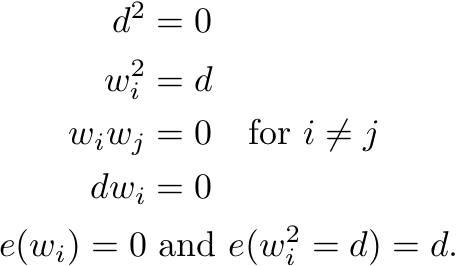

Britain’s insistence that calculus was the discovery of Newton arguably limited the development of British mathematics for an extended period of time, since Newton’s notation is far more difficult than the symbolism developed by Leibniz and used by most of Europe. The debate surrounding the invention of calculus became more and more heated as time wore on, with Newton’s supporters openly accusing Leibniz of plagiarism. Since they developed their theories independently, however, they used different notation. They were the ones to truly found calculus as we recognise it today. However, Newton and Leibniz were the first to provide a systematic method of carrying out operations, complete with set rules and symbolic representation.
#History of infinitesimals full#
Isaac Barrow, Newton’s teacher, was the first to explicitly state this relationship, and offer full proof. The key element scholars were missing was the direct relation between integration and differentiation, and the fact that each is the inverse of the other. A whole host of other scholars were also working on theories which contributed to what we now know as calculus in this period, so why are Newton and Leibniz known as the real creators? Blaise Pascal integrated trigonometric functions into these theories, and came up with something akin to our modern formula of integration by parts. Some of Fermat’s formulas are almost identical to those used today, almost 400 years later.įermat also contributed to studies on integration, and discovered a formula for computing positive exponents, but Bonaventura Cavalieri was the first to publish it in 16. It concerns speed, acceleration and distance, and arguably revived interest in the study of motion.Īrguably the most transformative period in the history of calculus, the early seventeenth century saw René Descartes’ invention of analytical geometry, and Pierre de Fermat’s work on the maxima, minima and tangents of curves. The Merton Mean Speed Theorem, proposed by the group and proven by French mathematician Nicole Oresme, is their most famous legacy. A collection of scholars mainly from Merton College, Oxford, they approached philosophical problems through the lens of mathematics. While many of calculus’ constituent parts existed by the beginning of the fourteenth century, differentiation and integration were not yet linked as one study.īack in the western world, a fourteenth century revival of mathematical study was led by a group known as the Oxford Calculators. There was an apparent transfer of ideas between the Middle East and India during this period, as some of these ideas appeared in the Kerala School of Astronomy and Mathematics. An Arab mathematician, Ibn al-Haytham was able to use formulas he derived to calculate the volume of a paraboloid – a solid made by rotating part of a parabola (curve) around an axis. Meanwhile, on the other side of the world, both integrals and derivatives were being discovered and investigated. This is similar to the methods of integrals we use today.Īfter the ancient Greeks, investigation into ideas that would later become calculus took a bit of a lull in the western world for several decades.Īs with many other areas of scientific and mathematical thought, the development of calculus stagnated in the western world throughout the Middle Ages. Greek philosophers also saw ideas based upon infinitesimals as paradoxes, as it will always be possible to divide an amount again no matter how small it gets.Īt some point in the third century BC, Archimedes built on the work of others to develop the method of exhaustion, which he used to calculate the area of circles. The Greeks would only consider a theorem true, however, if it was possible to support it with geometric proof.

Democritus worked with ideas based upon infinitesimals in the Ancient Greek period, around the fifth century BC. Like many areas of mathematics, the basis of calculus has existed for millennia. This unification of differentiation and integration, paired with the development of notation, is the focus of calculus today. Calculus discusses how the two are related, and its fundamental theorem states that they are the inverse of one another. This means differentiation looks at things like the slope of a curve, while integration is concerned with the area under or between curves. It was originally called the calculus of infinitesimals, as it uses collections of infinitely small points in order to consider how variables change.ĭifferentiation and integration are the main concerns of the subject, with the former focusing on instant rates of change and the latter describing the growth of quantities. Put simply, calculus these days is the study of continuous change.


 0 kommentar(er)
0 kommentar(er)
